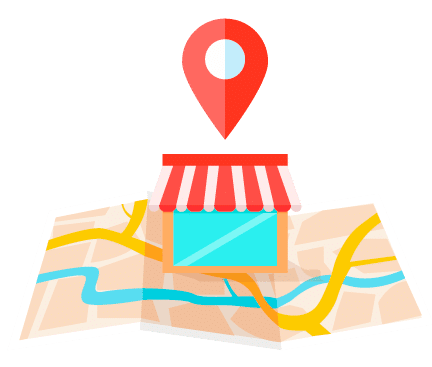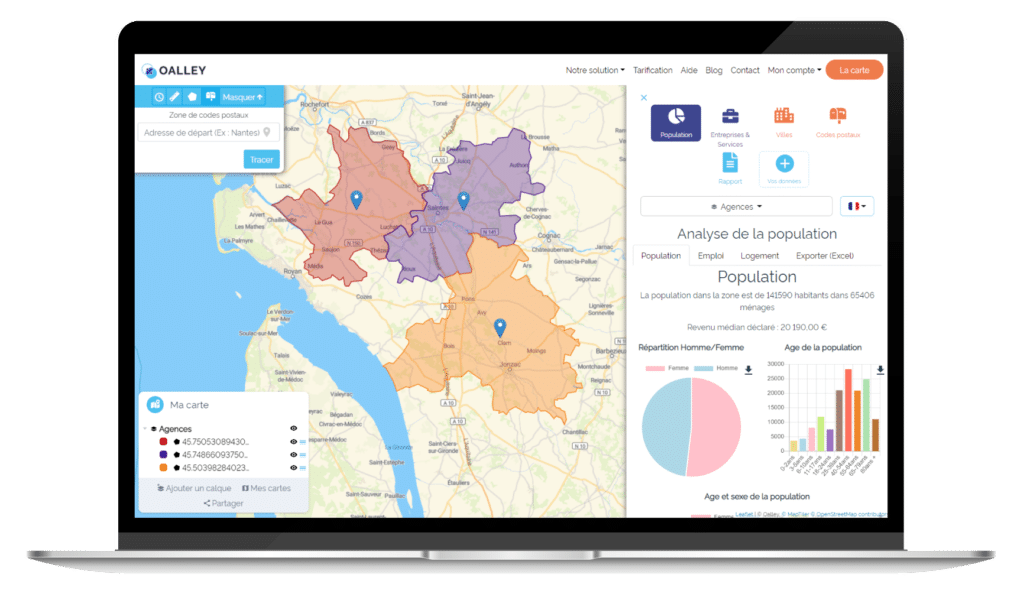What is local marketing?
Local marketing or location-based marketing is marketing applied to a particular geographic area. It consists of sending communications to a nearby audience (potential customers).
It is particularly relevant for local businesses like brick-and-mortar stores, restaurants, and services. Franchisors also use this method to increase sales by optimizing their strategies for each of their locations.

How do you market a local business?
Marketing a local business means that you must incorporate a geographic element into your strategy. In fact, this is so important that it’s the first thing you need to think about. Your customers are nearby and you need to reach them immediately. This will also mean that you don’t need to waste money by sending communication to other people! For more information, see “What is a local marketing strategy?”
What is a local marketing strategy?
A local marketing strategy makes use of all your channels to offer your consumers an omnichannel experience.
Digital marketing
Both SEO and SEA must be geotargeted.
Your website needs to be set up on the basis of SEO (search engine optimization) principles, and must include local keywords: “near me”, “near by” and the names of cities and places your company’s marketing is targeting.
SEA (search engine advertising) is mostly Google Ads, where you can buy the same keywords and use extensions for your ads, such as directions and phone number. Facebook and Instagram are also pretty powerful tools for online OOH (out-of-home) communication.
You will need to know which areas you want to target. With smappen, you can easily extract the exact zip codes and cities in a catchment area made using an isochrone (which is more accurate than using radius or official boundaries).
Finally, use Google’s My Business tool! It is the cornerstone of your local marketing strategy.
Print marketing
You can also launch print campaigns by sending or handing out flyers. To do that, you will need to assess the volume and, potentially, extract zip codes for the neighborhood where you want to launch your campaign. smappen can help you to do this.
How do you do local market research?
Local market research is particularly helpful for understanding the customers and prospects in your catchment area.
There are three steps to doing local market research.
- Work out what area you will conduct your research in.
To do this, you need to know exactly what your company’s area of influence is on the ground. You might need to use your CRM data to find out where your customers come from. If your business hasn’t launched yet, don’t hesitate to carry out a survey!
The size of areas can vary a lot – it depends on the sector, and on the product or service you provide. For example, the catchment area of a fast-food restaurant in a big city will be very different from the trade area of a DIY store in the countryside. The size, the time or distance, and the mode of transport used will be very different.
With smappen, you can draw as many catchment areas as you want, in many different ways: isochrone, isodistance, or manually, using parameters based on timing, distance, and mode of transport. Start drawing your area
- Define your target audience.
Who are they? If you’re conducting local market research to find out which location is best for your brand, this step is necessary. If you’re conducting local market research to find out who is present in your catchment area, go straight to step three.
You need to get to know your target audience. Are they male or female? Are they young or old? Do they live in cities or the countryside? Do they live in houses or apartments? Define your target market. This lets you know which data you need to analyze for your area.
- Find and extract the data you need.
Software like smappen gives you access to demographic data on your area. The algorithm calculates the number of people in your area for you, along with sociodemographic data about them: age, gender, socioeconomic classification, households, etc.
To analyze this data better, you can extract it as Excel reports. You can go into greater depth with your local market research by importing your CRM data into the map. This will help with, for example, assessing your market penetration.
How do demographics affect your local market?
Demographics are an essential part of the marketing strategy for small or local businesses. Demographic maps can help you better understand the demographics of your catchment area, you will be able to see who your potential customers there are. Understanding what types of people are there and how they behave will help with your growth by improving your marketing, product development and service optimization.
Targeted content campaigns are also very useful for marketing strategies.
Smappen helps you launch local marketing campaigns.
Draw your catchment area and assess the size of your audience. Extract zip codes for targeted campaigns.


I have been searching for this software for years! smappen is nothing short of incredible. It is exactly what I needed and produces fantastic results. And the user interface… It is so simple!

I manage 25 territories across the US for medical device sales distribution. Mapping territories for my reps has never been easier. smappen turned me into a hero at the company!

Exceptional and personal training and support. It did exactly what I wanted it to do, with a very high degree of accuracy.
